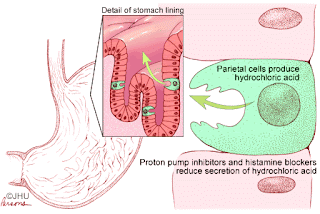8 Drugs Doctors Would Never Take
Hey, it wasn't my headline.
This is apparently from 2008 here: http://www.menshealth.com/mhlists/consumer_awareness_of_drugs_and_medications/index.php
Contradicted, partially, here:
http://drmintz.blogspot.com/2008/06/truth-on-8-drugs-doctors-wouldnt-take.htmlContradicted, partially, here:
But the internet being the internet it has arisen from the grave like a Romero extra here, here, here, and most curiously here.
Merely a sampling.
You no doubt get the picture.
So now that four years have passed since the initial scary-title article, where are those devilish eight meds and what are they up to?
Ketek
Because who needs a liver anyway?
Never noticed it looks like a baseball cap. Or a snail. Or something.
Had been used for sinusitis and respiratory tract infections. Now likely to only be encountered in pneumonia cases.
I was in Charlotte for a seminar when the Observer ran a story on Ketek. Just happened to read the story. Turned out to be a good thing I did.
Much belated congratulations to the doctors at Carolinas Medical Center that put Ketek/liver destruction together. http://www.redorbit.com/news/health/380231/doctors_link_drug_to_liver_disease/
(Apologies for not finding the original print article.)
Here we have a damning piece on the malfeasance related to ketek approval.
Advair
Interestingly, in the comments section of the article where these 8 baddies are listed, a commenter identifying himself as a pharm tech requests an article on the "The Biggest Rx Drug Jokes". He suggests Lovaza head the list. Because of what it is and what it costs, apparently.
Lovaza is Omega fatty acid.
Yes. Same stuff you take as fish oil caps, basically.
"$150 for fish oil!", he wrote.
Advair stops the arichidonic acid cascade. Stops bronchial inflammation.
Omega 3 will also stop the arichidonic acid cascade. Stop the inflammatory cascade. Improve markers of lung function.
Nice article here.
Nice article here.
And you don't have to spend $1.50/cap. More like 20-50 cents for good quality. Or eat fish.
But you're not going to rely on fish oil when you can't breathe, so...
But you're not going to rely on fish oil when you can't breathe, so...
Advair is a two part drug.
Side effects of advair are increased possibility of infection and fungal overgrowth from the steroid part.Tachycardia, palpitations, anxiety, hyperactivity, insomnia, headaches, from the beta-agonist part.
Avandia
This diabetes drug is thought to have precipitated over 80,000 heart attacks. In the U.S. alone.
And stroke.
And fractures, as reported by the manufacturer.
And hepatitis.
The regulatory arc of this drug is interesting.
FDA approval in 1999.
In 2007 there were calls, even within FDA, to withdraw it.
Then in 2010 FDA voted to restrict it. Good insight into FDA workings here.
In 2011 the manufacturer withdrew the drug and it was only available by mail order through certain pharmacies.
Finally the manufacturer paid billions (yes, 'B'illions) in a settlement with the government over charges of sin by ommission in reporting the effects of the drug. Brilliant timeline and more here.
Pilosec/nexium
Was nexium a scam that should never have been patented?
This guy thinks so.
Interesting, but not to the point.
I made the point in the blog entry "FDA Adds Eight Drugs to Watch List".
Visine
Gotta preach to the people where you find 'em.
Why was this on the list?
Because of this?
Sure there are side effects.
But plenty of meds are worse.
The article puts it down to dilatory effect.
Unh-huh.
Pseudoephedrine
It's telling that pseudoephedrine is recommended against in those with coronary artery disease, hypertension, cardiovascular disease and closed angle glaucoma (ocular hypertension).It is a central nervous system stimulant that causes insomnia, nervousness, excitability, and anxiety.
It can cause tachycardia (racing heart), arrhythmia (irregular heartbeat), palpitations (skipping beats).
It sure will dry a runny nose.
Celebrex
This is a non-steroidal antiinflamatory drug used to treat pain and inflammation.Gastrointestinal ulceration (hole in your gut) is a possibility.
Stroke is possible.
Most of the fear over celebrex comes from heart attacks.
Pfizer, manufacturer of celebrex, has paid out hundreds upon hundreds of millions of dollars settling claims related to celebrex.
In '09 a celebrex researcher admitted he had falsified results in 20 studies to make celebrex appear better at pain control than it actually was.
Flasified data?
Say it ain't so.










